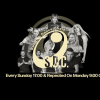-
 play_arrow
play_arrow
Clubalicious Clubalicious Radio
-
 play_arrow
play_arrow
London Calling Podcast Yana Bolder

When songwriter Mentor Williams came to Nashville from L.A. in 1972, he was looking at an interesting proposition. After several years of studio experience limited to songwriting demos in L.A., his naturally entrepreneurial inclination led him to strike out on his own as a producer. He was able to cut a deal with Nashville-based Decca (soon to be acquired by MCA) for his fledgling production company, Third Son. Williams had chosen as his first album project a try at restarting the career of Dobie Gray, the son of a Texas sharecropper whose previous chart success had been nearly a decade earlier with the Top 20 R&B version of Ramsey Lewis’ jazz classic, “The In Crowd.” Engineer Gene Eichelberger, at Quadrafonic Sound (now Quad Recording) remembers Williams as anxious about his freshman project: “Some of the songs took longer to mix than they did to record,” he recalls, as Williams sought to make good on his first major-label outing.
Talk about hitting a grand slam on your first at-bat in the majors. The album’s first single, “Drift Away,” penned by Williams, topped out at Number 5 on the pop charts in ’73 and became an instant classic, a staple of oldies radio that generated scores of genre-hopping covers by artists ranging from Michael Bolton to Narvel Felts.
Future publishing mogul Tim Wipperman, then the tape copy person at A&M Records, had introduced Williams to the new generation of Nashville session players in the year before the sessions started in autumn of 1973: guitarist Reggie Young and bassist Mike Leach, who had cut their teeth at Chips Momans’ American Studios in Memphis; keyboard player David Briggs, who founded Quadrafonic with fellow Muscle Shoals veteran Norbert Putnam; and drummer Kenny Malone, so sensitively attuned to a song’s meaning that, famously, upon hearing that a song’s lyric described a woman slitting a man’s throat, told the producer to wait a moment while he retrieved a different cymbal from his van, one that had just the right “scream” for the track.
It was a session crew unlike previous ones in Nashville, perfect for the blend of R&B, soul and pop that Williams heard in Gray’s distinctive voice. Briggs’ presence on the record made Quadrafonic a logical choice. The studio, optimistically named for the doomed CBS and Sansui quad-channel formats, was cutting-edge for its time with a 24-channel Quad 8 console (later expanded to 32 channels by Eichelberger with the help of his young wiring assistant, Denny Purcell), an Ampex MM1000 2-inch 16-track deck and Altec main monitors with JBL 4130 speakers in the rear. Compressors were a pair each of the Teletronix LA2A and UREI 1176.
With the musicians assembled in the live room and Gray in an iso booth with a Neumann U47 FET ready to do vocals, Williams ran the chord changes down on an acoustic guitar while Eichelberger put the finishing touches on the microphone placements. The kick drum had a U47 positioned in front of it to catch the pop that Eichelberger used to give the low-end percussive definition, with a pair of U87s for overheads above the toms and pointing downward, and an AKG 224E on the snare drum placed tightly a couple of inches in from the rim. “Kenny asked me what kind of sound I wanted on the snare, and I said something deep and rich to complement Dobie’s voice,” Williams remembers. Malone, formerly the head of the percussion department at the Armed Forces School of Music during his stint in the Navy, chose a 10-inch field marching drum and kept the snares loose to give it a tail that the EMT 250 plate reverb would emphasize. “A lot of the verse is just drum and bass, so the sound of the kit was very important to the track,” says Williams.
Guitar amps for Young, whose Les Paul played the song’s soulful and defining double-stop fills, and Troy Seals, whose Telecaster added staccato country licks in the chorus, were miked with AKG 224s set about six inches from the speakers, slightly off-axis. “I also used the 224s for acoustic guitars a lot,” says Eichelberger. “They sound good with very little EQ on them.” A pair of U87s on a baby grand created a stereo piano track, and Leach’s bass was picked up by a combination of a homemade DI tap and an Electro-Voice RE-20 microphone on the amp.
“The band picked up the song immediately,” Williams remembers. “The intro was a set of chords I had, but Reggie turned them into what you hear on the record”: a folky two-bar riff that sets up the song and serves as the turn-around between verses. Young later doubled the part each time it occurred, and Eichelberger set the two tracks slightly out of phase with each other, giving it a Leslie-like quality. A roll of 3M 250 tape — one of the first of a generation of formulations designed to absorb hotter record levels — began to pass over the capstan at 30 ips and the basic track was locked in within the first three passes, with an almost-complete lead vocal from the guide track. Gray punched in a word here and there, but Williams says he would let small artifacts, like headphone leakage, pass in favor of keeping the feel of vocal.
Classic Tracks: The Traveling Wilbury’s “Handle With Care”
Williams, not wanting to add any additional timbre to Gray’s sonorous vocal, had the singer harmonize with himself, despite the fact that tracks were becoming scarce. “We had to put some of the harmony tracks onto the parts of the guitar tracks where the guitars were laying out,” says Williams. “We had a piece of one of them on a cymbal track.” The track becomes a bit denser toward the end: A tambourine appears on the ride-out only, and hand-claps were added in the final breakdown chorus.
Strings were recorded after tracking was complete in Quadrafonic’s wood-paneled front room, recorded by Eichelberger with a combination of U87s and 224Es and mixed to stereo. “I always made sure I checked them for phase before I recorded them,” he says.
This, of course, all went down during the era before console automation, so the mix was physically strenuous. “It took two sets of hands, mine and Gene’s, to get that mix done,” says Williams. “There was a lot of riding the faders because of the vocals that were sharing guitar tracks, and a lot of panning for the same reason: We had to put the harmony tracks down the middle in the choruses and then quickly pan the guitars back to hard-left and -right. There was also a lot of muting; for the entire intro and first verse, most of the tracks are muted to reduce noise.” Eichelberger had an unusual trick that grouped mutes — sort of. “We would put three or four cassette boxes together with gaffer’s tape and use them to cover several mute buttons at the same time with one hand,” he explains. “That was the ‘master’ mute.” The record got its finishing touch from mastering engineer Bernie Grundman in Hollywood.
“Drift Away” did anything but drift away, and has remained part of the repertoire of countless cover and party bands ever since, not to mention a favorite of contestants auditioning for American Idol. In 2003, a version by Uncle Kracker, featuring Dobie Gray as guest vocalist, reached Number One on the pop charts; a year later, it topped the adult contemporary chart, cementing its wide cross-over appeal. Gray has managed to stay vital through the years as both a performer and songwriter — his move to Nashville in the ’70s led to his songs being covered by everyone from Ray Charles to George Jones to Tammy Wynette to John Denver. He’s also done considerable work in commercials. His Website, dobiegray.com, claims he has an album of new material due this year.
The success of “Drift Away” also helped establish Quadrafonic Studios and Nashville itself as destinations for far more than country music, along with records like Neil Young’s Harvest album, recorded at the studio in 1972. “Back in L.A., they thought I was crazy to go to Nashville to make a pop/R&B record,” recalls Williams, who says he at first had to battle the label — which was looking for a short, up-tempo ditty — to make “Drift Away” the first single. “But after that, Nashville became the new hip place to record. People realized you could make any kind of record you wanted there. And you still can.”
This article was first posted in September, 2008.
Written by: Admin
Similar posts
Recent Posts
- 🎶 New Music: JID, OneRepublic, Morgan Wallen, Post Malone, MarkCutz, Kidd Spin + More!
- Classic Tracks: The Fireballs’ “Sugar Shack”
- Classic Tracks: Arlo Guthrie’s “City of New Orleans”
- Classic Track: k.d. lang’s “Constant Craving”
- Classic Tracks: Waylon Jennings’ “Are You Sure Hank Done It This Way”
Recent Comments
No comments to show.Featured post

Latest posts

🎶 New Music: JID, OneRepublic, Morgan Wallen, Post Malone, MarkCutz, Kidd Spin + More!

Classic Tracks: The Fireballs’ “Sugar Shack”

Classic Tracks: Arlo Guthrie’s “City of New Orleans”

Classic Track: k.d. lang’s “Constant Craving”

Classic Tracks: Waylon Jennings’ “Are You Sure Hank Done It This Way”
Current show
Upcoming shows

The House Crunch
Terri B
00:00 - 01:00
In Session
Sister Bliss
01:00 - 02:00
Fresh Is Fresh
This Weeks Hottest Releases
02:00 - 09:00
Swedish Dance Chart
09:00 - 11:00

Fresh Is Fresh
This Weeks Hottest Releases
11:00 - 16:00Chart
Powered by Dee jay promotions visit us








 Invalid license, for more info click here
Invalid license, for more info click here